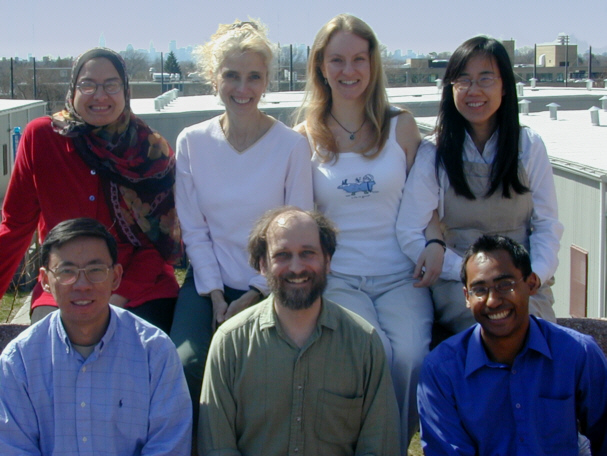 Associate Professor and Department Chair
Associate Professor and Department Chair
Ph.D. (Stanford University)
Office: NSB E-108 Phone: (718) 997-3414 Laboratory: NSB E-137 Lab phone: (718) 997-3567
E-mail: Timothy.Short @ qc.cuny.edu
Research interests:
Higher plant seedlings undergo an incredible transformation when they are moved from the dark into the light, but very little is known about the cellular and molecular events that produce these developmental changes. In my laboratory we are using a combination of physiological, biochemical, and molecular techniques to try to understand how these complex processes are regulated in the cell and how the various components of light—color, intensity, duration, and direction—are integrated with other environmental signals to affect growth and development. Currently, there are several major projects that are underway in the laboratory to approach these questions. First, we have isolated a set of mutant plants that lack normal developmental responses to controlled light conditions. Large numbers of seedlings from the model plant Arabidopsis thaliana L. are being tested for specific growth characteristics, and those that are aberrant are examined further. The mutant plants are compared genetically, physiologically, and biochemically with other mutants, and the mutated genes mapped, isolated, and cloned. As additional relevant genes are detected, we will attempt to fit them together and reconstruct basic signal transduction pathways for these critical processes.
Second, we are examining the effects of a variety of environmental stimuli on the behavior of existing light perception mutants. Alterations in the growth, physiology, and gene expression of the mutants compared with the parental wild type plants are giving important clues to the interactions of different signaling pathways in the plant cells. Some of these differences are not apparent until the plants are subjected to changes in their light, nutrient, hormonal, or other environmental conditions. Genetic and physiological experiments are elucidating exciting intercommunication among various sensory perception systems.
Third, we are examining the light-regulatory signalling pathways in an emerging model fern Ceratopteris richardii through a series of physiological and molecular approaches. Existing mutants and inhibitory RNA (RNAi) have allowed us to analyze some aspects of light-mediated development. By isolating genes for various photoreceptors and likely signalling intermediates, and by systematically decreasing the expression of those gene products by RNAi, we have observed important affects of light on cell division, cell growth, tissue morphology, sexual differentiation, and gene expression. To examine this system further, and to open possibilities for further research in fern biology, we are also developing new techniques for the transformation and integration of genetic constructs into the Ceratopteris genome.
Together, these sets of experiments are providing important information about intracellular signaling processes in plants and in all eukaryotes.

Selected Publications:
Short, T.W. (1999) Overexpression of Arabidopsis phytochrome B inhibits phytochrome A function in the presence of sucrose. Plant Physiol. 119:1497-1505.
Xu, Y., Parks, B.M., Short, T.W., and Quail, P.H. (1995) Missense mutations define a restricted segment in the COOH-terminal domain of phytochrome A critical to its regulatory activity. Plant Cell 7:1433-1443.
Quail, P.H., Boylan, M.T., Parks, B.M., Short, T.W., Xu, Y., and Wagner, D. (1995) Phytochromes: photosensory perception and signal transduction. Science 268:675-680.
Short, T.W. and Briggs, W.R. (1994) The transduction of blue light signals in higher plants. Ann. Rev. Plant Physiol. Plant Mol. Biol. 45:143-171.
Short, T.W., Porst, M., Palmer, J.M., Fernbach, E., and Briggs, W.R. (1994) Blue light induces phosphorylation at multiple sites on a pea plasma membrane protein. Plant Physiol. 104:1317-1324.
List of Publications from PubMed
Graduate Students:
Anna Nugent. Topics: Production of transgenic Ceratopteris richardii and its use in studying light signal transduction and photomorphogenesis.
Former Graduate Students:
Caihong Qiu Fang Qi Bridgit Goldman Abeer Mohamed Terrence Y. Bissoondial


